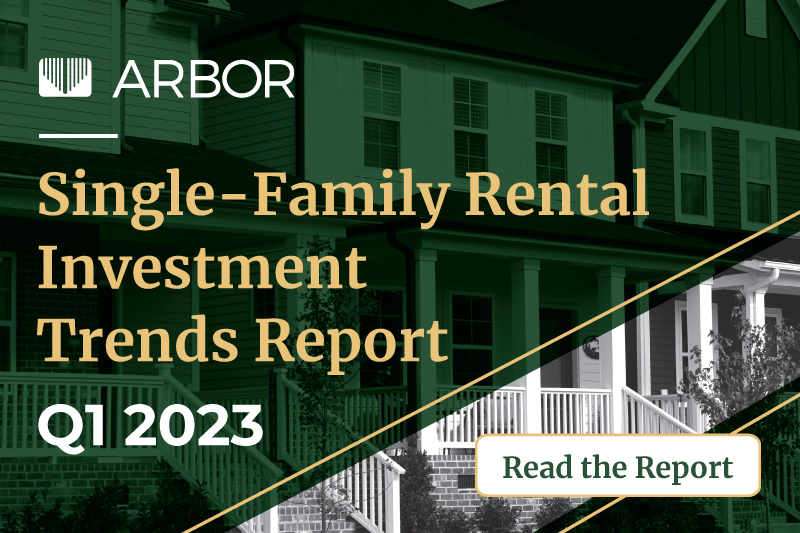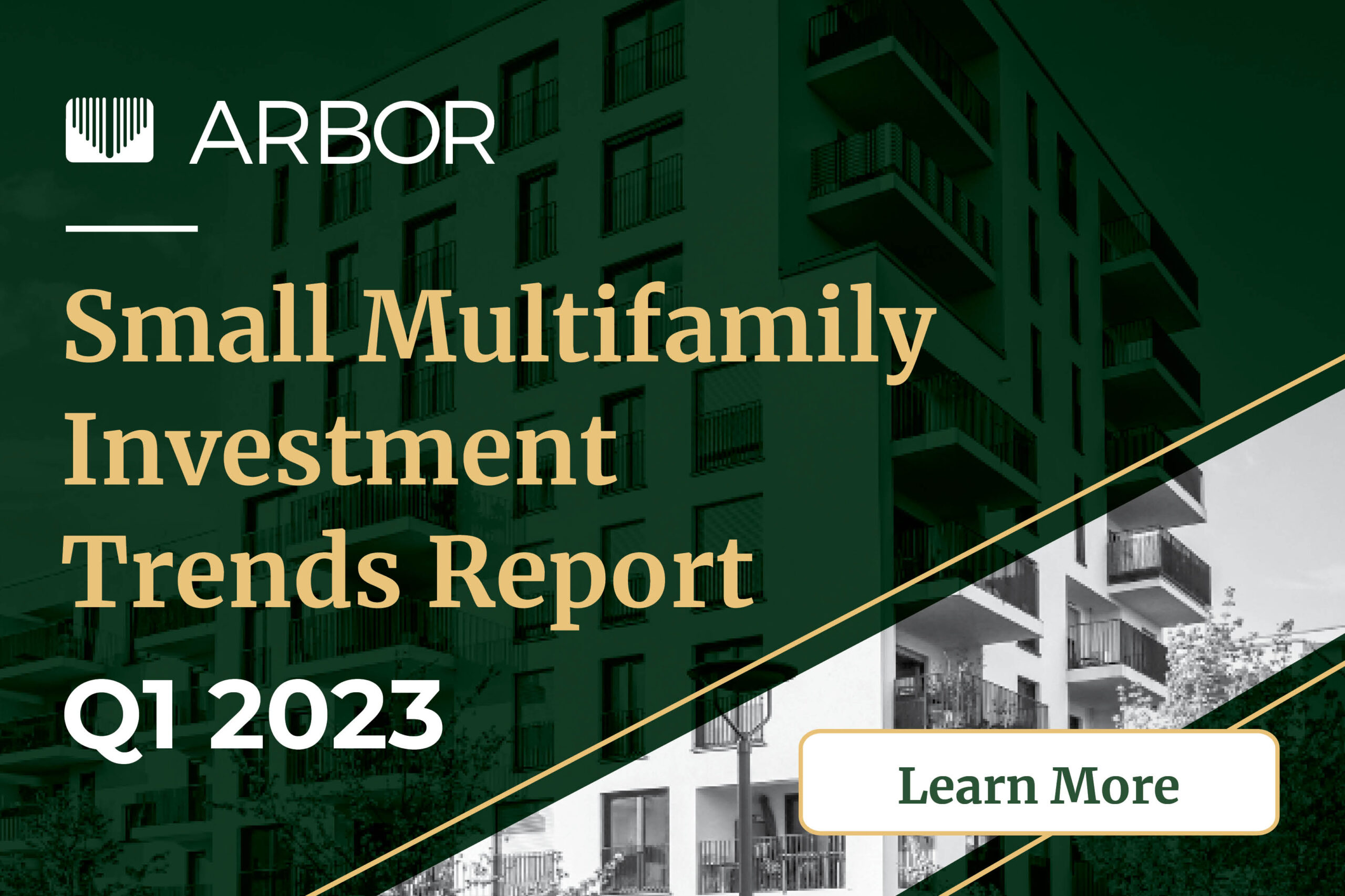The state of housing affordability in the U.S. has continued to erode as a growing wave of supply-driven policies offers hope of a solution on the horizon. A closer look at the nation’s overall housing needs underscores the increasing urgency of the situation.
Small Multifamily Investment Snapshot — Q1 2023

The small multifamily sub-sector ended 2022 on a high note with originations falling just behind 2021’s peak. As economic storm clouds continue circling, small multifamily appears fortified from any reverberations that may result.

Single-Family Rental Investment Trends Report Q1 2023

Arbor’s Single-Family Rental Investment Trends Report Q1 2023, developed in partnership with Chandan Economics, explores a growing multifamily sector with a unique ability to rise above macroeconomic headwinds. Last year, investors purchased more single-family rental (SFR) units than in 2021 as uncertainty rippled through the commercial real estate industry. Construction in the sector also ramped up in 2022, with starts reaching all-time highs by unit count and market share. This upward trend, fueled by significant structural support, sets SFR apart from many other commercial real estate sectors.

Top Counties for Demographic Tailwinds

When apartment investors consider locations for capital deployment, growth potential is a top-of-mind concern. On a local level, population changes can influence everything from rent growth to occupancy to future property values. County-level positive net migration and natural population growth trends, identified in an analysis of U.S. Census Bureau data, reveal the counties where demographic tailwinds make a compelling case for real estate investment.

Affordable Housing Market Snapshot — Spring 2023

Arbor’s latest Affordable Housing Trends Report, developed in partnership with Chandan Economics, offers a wide-ranging lens into the complex, though critically important, affordable and workforce housing sectors.

Seven Facts about FHA Multifamily Loans for Affordable Housing

The Federal Housing Administration (FHA), a part of the U.S. Department of Housing and Urban Development (HUD), is one of the largest mortgage insurers in the world. The agency insures mortgages on affordable housing, multifamily properties, single-family homes, multifamily properties, and health care facilities. Since 1934, FHA has financed over 50,000 multifamily mortgages nationwide. Whether you’re interested in acquiring, refinancing, or rehabilitating an affordable housing property, FHA multifamily loans are a financing route you need to know about.

Video Analysis: Arbor’s Affordable Housing Trends Report Spring 2023

In this video, Sam Chandan, professor of finance and Director of the Chen Institute for Global Real Estate Finance at the NYU Stern School of Business, discusses the key findings of Arbor’s Affordable Housing Trends Report Spring 2023, developed in partnership with Chandan Economics. He adds context to the Federal, state, and local housing policy trends impacting the future of the affordable sector, which, he notes, continues to have the highest development prospects of any residential subtype.

Small Multifamily Investment Trends Report Q1 2023

The small multifamily subsector, strengthened by sound structural fundamentals, is well-positioned to face distress due to interest-rate pressure. Even though pricing has slid lower and cap rates have risen, it should remain resilient in the coming quarters. A deep dive into a uniquely positioned subsector, Arbor’s Small Multifamily Investment Trends Report Q1 2023, developed in partnership with Chandan Economics, analyzes the competing headwinds and tailwinds influencing investment performance.

Arbor Wins Prestigious Fannie Mae Excellence in Technology Award

Fannie Mae Multifamily recently honored Arbor with its prestigious 2022 DUS Lender Award for Excellence in Technology, citing it as “a constant source of innovative ideas” and “a stalwart partner” in driving “Fannie Mae’s digital transformation for the DUS community.”

U.S. Multifamily Market Snapshot — Q1 2023

The U.S. multifamily market continued to show signs of slowing during the first quarter of 2023. Rent growth was down from the skyrocketing pace seen in 2021 and 2022, although demand remained strong and vacancy held near historic lows.

State and Local Governments Step Up to Address Affordable Housing

Even as home prices posted their first annual decline in over a decade in March, affordability remains an urgent economic and policy challenge. Today, no states currently have an adequate amount of affordable and available homes for their lowest-income renters. With public support for improving housing affordability growing stronger, state and local governments have been prioritizing policy solutions to close the nationwide housing gap.


